| (insert your NIE or newspaper logo here) |
Weekly Online LessonOnline Lesson ArchiveGrade Level: 5-8
|
Life Beyond Earth
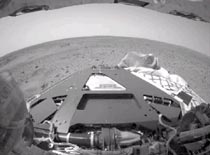 A huge success in space exploration came Tuesday, January 6, 2004, when the NASA Mars Exploration Rover (MER), Spirit, landed on Mars, stood up, and transmitted to Earth its first snapshots of the red plant's surface.
A huge success in space exploration came Tuesday, January 6, 2004, when the NASA Mars Exploration Rover (MER), Spirit, landed on Mars, stood up, and transmitted to Earth its first snapshots of the red plant's surface.
Spirit's companion on this mission is another MER — Opportunity, due to arrive January 25. Scientists hope the second rover will also arrive safely at its targeted landing spot, where one job will be to test for the evidence of water. The presence of water not only means that life may have existed at one time on the red planet, but also that life could exist here again.
In what direction the American space exploration program will take may depend a lot on the success of these American "tourists" we've sent to sample Mars. In fact, sometime this week, President George W. Bush is expected to publicly outline his vision for future space exploration. Some say the government is planning a permanent science base for astronauts on the moon, as well as human voyages to Mars. Ultimately, many believe, the goals include populating other planets and locating ones already inhabited.
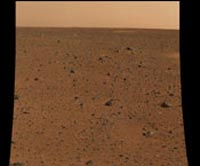 Sound like science fiction? Well, even if we're on the right track to colonize other planets, it probably won't actually happen for at least several generations. But many people believe that exploring this road is important and even necessary to ensure the survival of humankind. Experts project that the Earth's population will reach 8 billion people within two decades, further depleting the planet's natural resources and crowding our living space.
Sound like science fiction? Well, even if we're on the right track to colonize other planets, it probably won't actually happen for at least several generations. But many people believe that exploring this road is important and even necessary to ensure the survival of humankind. Experts project that the Earth's population will reach 8 billion people within two decades, further depleting the planet's natural resources and crowding our living space.
So how exactly do we intend to populate other planets? What makes a planet habitable? To answer those questions, you will enlist in a training program then head off to Mars and see how our first off-world colony might look.
Welcome to the AstroVenture Training Center!
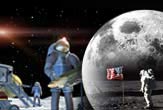 Your first step for this week's lesson is to attend NASA's AstroVenture training center with your guide, Astro Ferret. Here, you'll learn what makes a planet habitable and how to figure out which planets beyond Earth would be best-suited for human colonization.
Your first step for this week's lesson is to attend NASA's AstroVenture training center with your guide, Astro Ferret. Here, you'll learn what makes a planet habitable and how to figure out which planets beyond Earth would be best-suited for human colonization.
Make sure your computer provides speaker sound and has the Shockwave Player installed. You will go through all of the training programs and complete the Astronomy Mission. (To find out when you can return to complete the other missions and Design A Planet, see the Upcoming Modules section.)
Go ahead and begin with Astronomy Training. Here, you'll meet astrobiologist Kelly Snook. After the introduction, click on the forward arrow at the bottom right corner. Review her bio then move onto the next screen to Choose Your Character. You and one or more friends can each choose a character and be a team.
Next, take the quiz, What Do Humans Need To Survive? and move on to hear Kelly's short turtorial on how to use the screen tools. You must work through every feature in order to pass the training program and be sent on the mission. After reviewing the scientists' observations, you may go back and edit your Astro Journal notes, if you wish, before moving on to the next feature.
Explore all of the features of Star Types, Jupiter's Orbit, Earth's Mass, and Earth's Orbit. Make sure to read the Tech Notes for help.
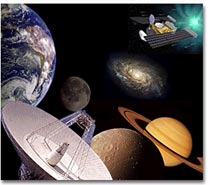 So what exactly makes Earth habitable on an astronomical level? What are the connections between the causes and effects?
So what exactly makes Earth habitable on an astronomical level? What are the connections between the causes and effects?
When you've worked through the features, click Submit and complete the Astro Challenge Remember, you can use your journal notes to help you answer the questions.
How did you do on the quiz before and after your training?
Now that you're a Senior Astronomer, you have been invited to join the Astronomy Mission. Re-take the quiz to enter the mission center. As you'll learn from Astro's introduction, you will go through four steps. Click the forward arrow to begin the mission. Type in your information and prediction before moving on.
In the first step, you'll meet stellar spectroscopist Yvonne Pendleton. What does a spectrometer do? Why are the line patterns different for different types of stars? How is the concentration of atmospheric gases related to the pattern?
To complete Step 1 of your mission, identify the types of stars using the Astro Reference Data and comparing each planet's spectrum with the three known types.
 Next you'll meet astrophysicist Ed Prather, who explains how a star's wobble might suggest that a planet is orbiting it. How does graphing the shifts in light waves help determine whether the planet is in an elliptical or circular orbit? Work through Step 2 of the mission to eliminate planets based on this scientific analysis, then move on.
Next you'll meet astrophysicist Ed Prather, who explains how a star's wobble might suggest that a planet is orbiting it. How does graphing the shifts in light waves help determine whether the planet is in an elliptical or circular orbit? Work through Step 2 of the mission to eliminate planets based on this scientific analysis, then move on.
In Step 3, Dawn McIntosh explains how scientists measure the brightness of stars and how they use this data to determine the presence of planets. So, how does brightness relate to planet size?
Michael Kaufman, an astrophysicist, takes you on a mathematical journey to find the distance between a star and orbiting planet. What's an AU? How is the "Habitable Zone" determined?
After completing the activity, return to the AstroVenture home page. Work through the rest of the training modules, as you did the Astronomy Training program.
How does understanding the Earth's atmosphere, geology, and biology help scientists look for other habitable planets? How difficult might it be to create and ensure the stability of all of these ideal conditions? What conditions could we create on a small-scale, so that small communities could essentially "seed" a new planet?
Think about the probability of a habitable planet on the astronomical level, then factor in the atmospheric, geological, and biological conditions necessary for an Earth-like planet. Do you think the chance of finding the right planet is worth all of the effort, money, and risk?
The Mars Experience
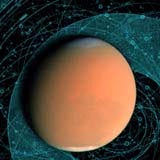 With some solid training under your belt, your next step is into the future of the Mars Project, at the early stages of the planet's development. Read the introduction, then take the Tour (QuickTime Player required). Why might there be conflict between people over how to develop the planet?
With some solid training under your belt, your next step is into the future of the Mars Project, at the early stages of the planet's development. Read the introduction, then take the Tour (QuickTime Player required). Why might there be conflict between people over how to develop the planet?
Start your tour with the Albor Greenhouse, and move down the list of features — including the Barsoom Valley, the Echus Overlook, the Mining Camp, the Space Elevator, the Terraforming Moholes, the Valles Marineris, and the Viking Lander Monument.
How have scientists harnessed the planet's natural state to begin the transformation of the planet into a more Earth-like state? How might the shape of the planet's surface determine where industries and cities will be built? What kinds of technology — from processing minerals, to recycling water, to monitoring atmospheric conditions, to growing food, and providing oxygen and fuel — are needed to develop and sustain a human colony here?
Newspaper Activities
Browse Targetnewspaper for news about the Mars rovers or about the future of the U.S. space exploration program. Have the rovers found any evidence that water or life forms ever existed on Mars? Did President Bush announce any new initiatives, vision, or goals for American space exploration? If so, what roles might the moon and Mars play in the long-term plan? What might be some of the next steps in off-world colonization?
© Copyright 2004
Learners Online, Inc.
